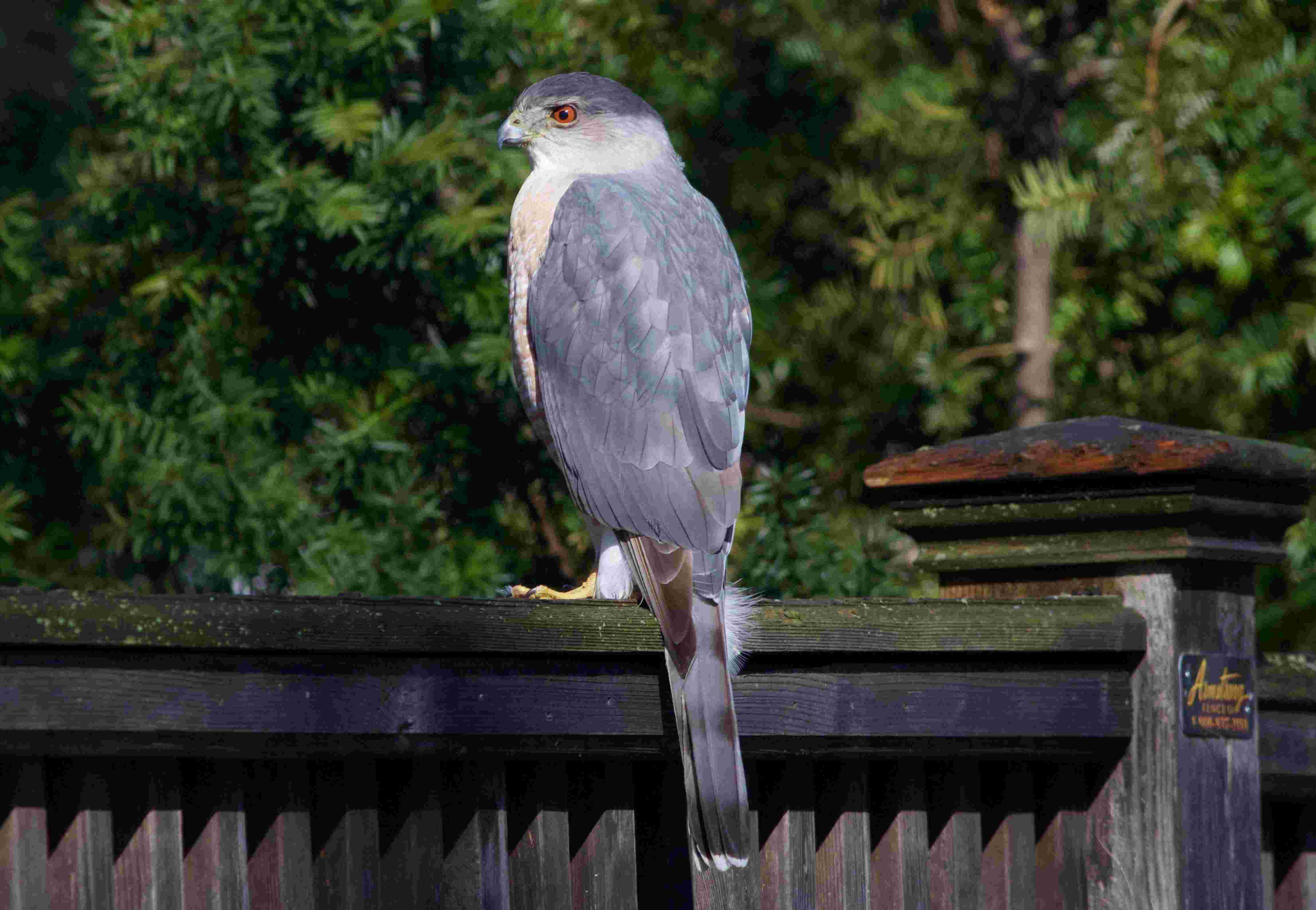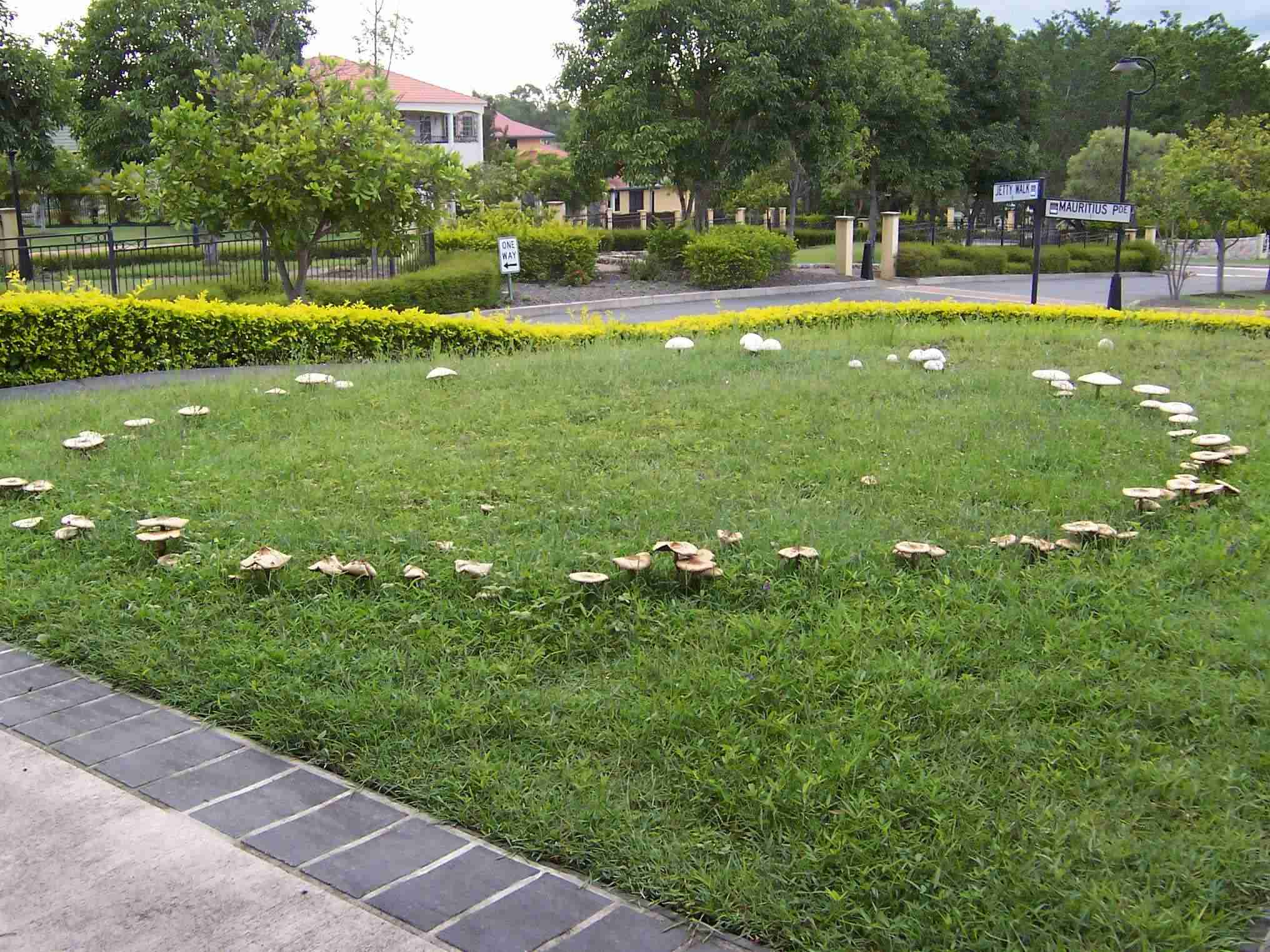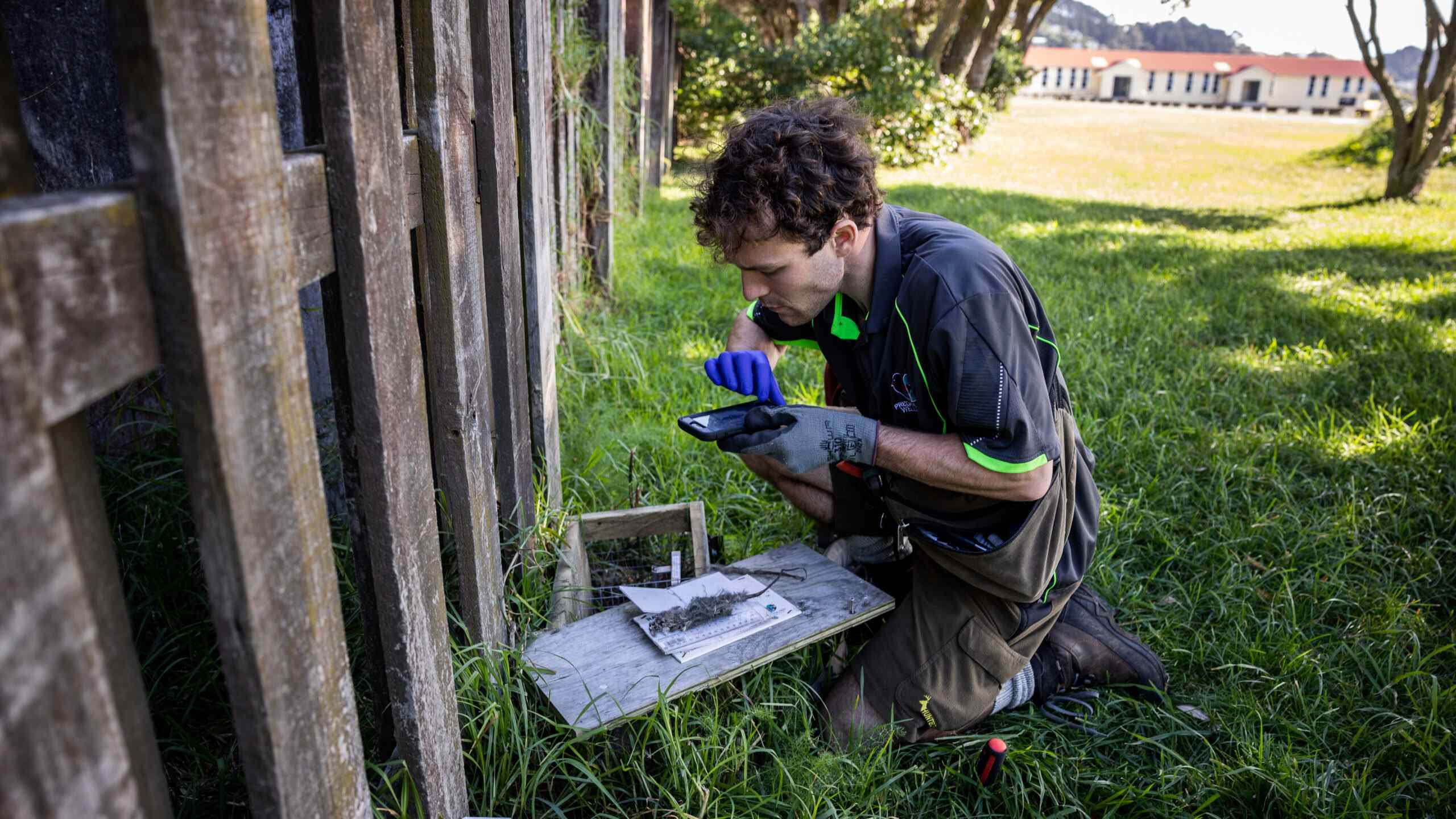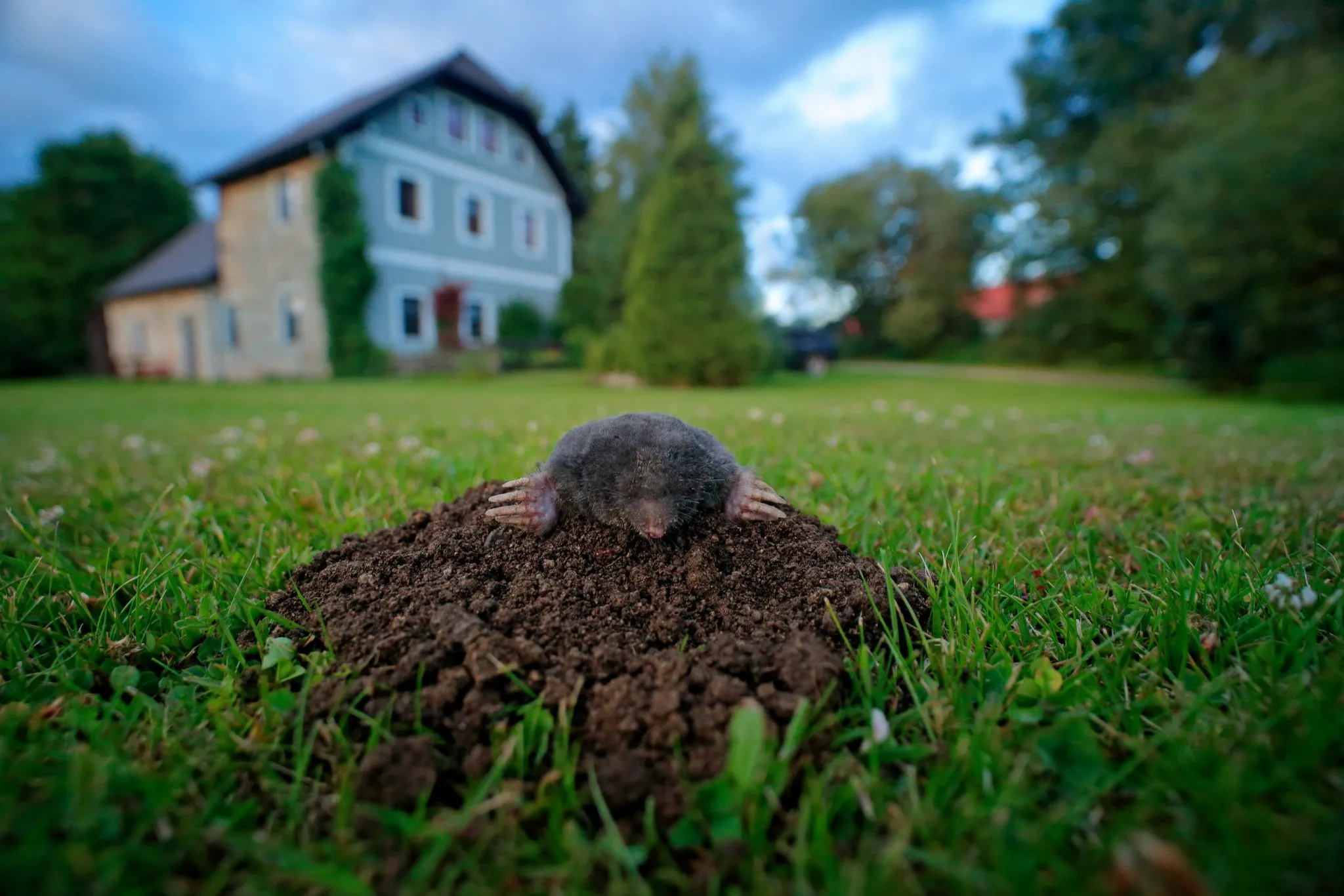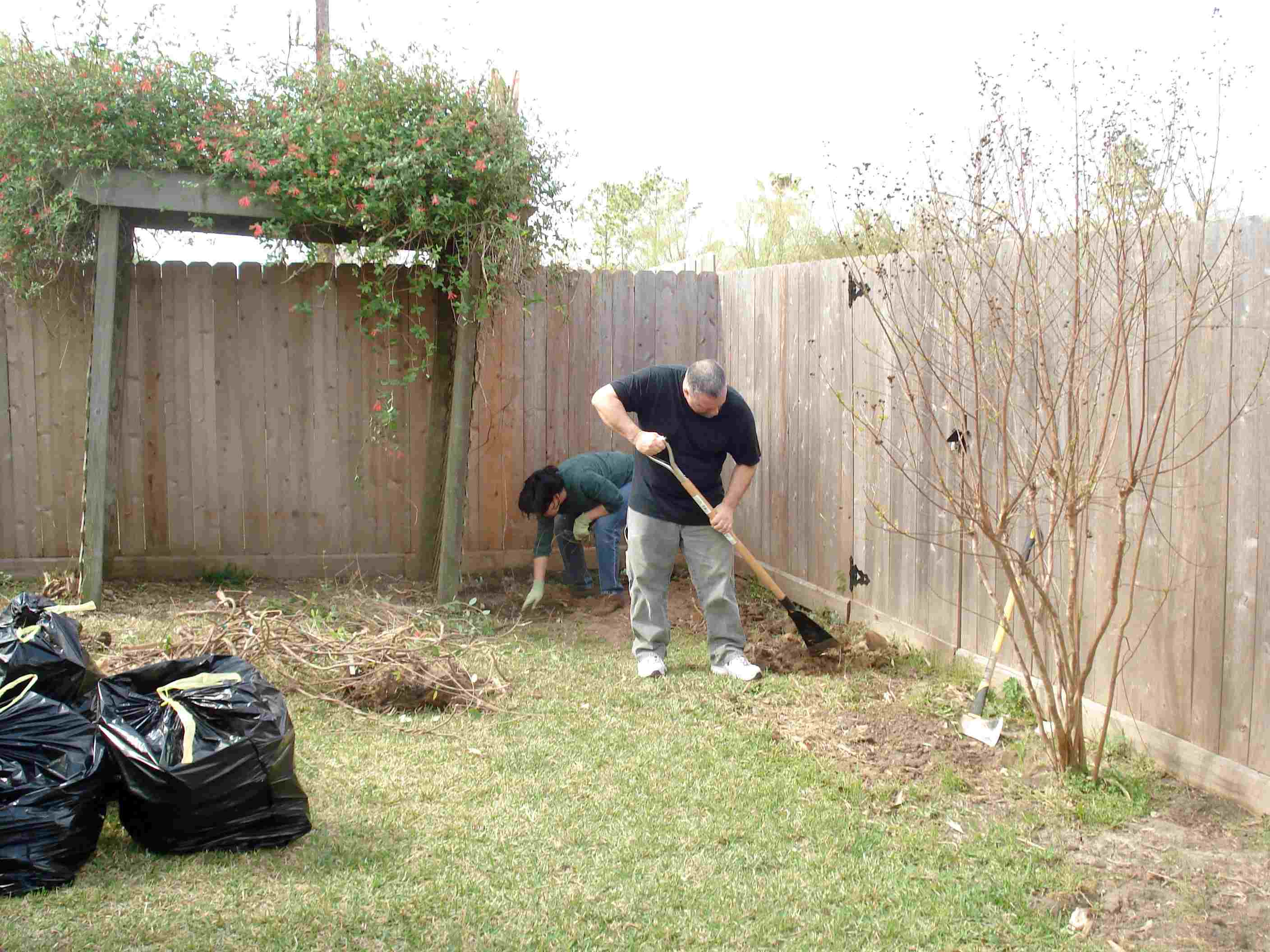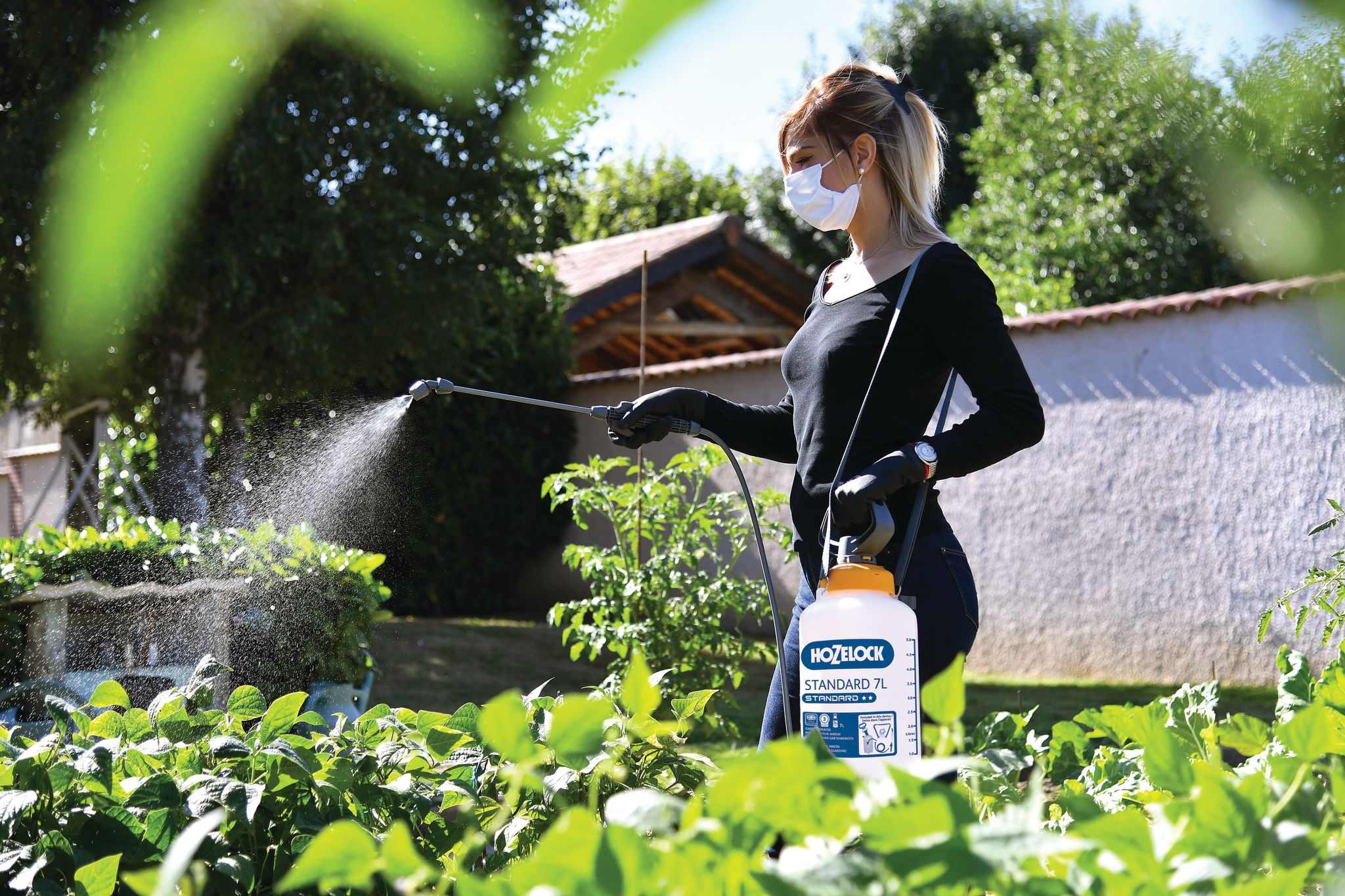Home>Gardening Tips and Tricks>How To Get Rid Of A Skunk In Your Backyard
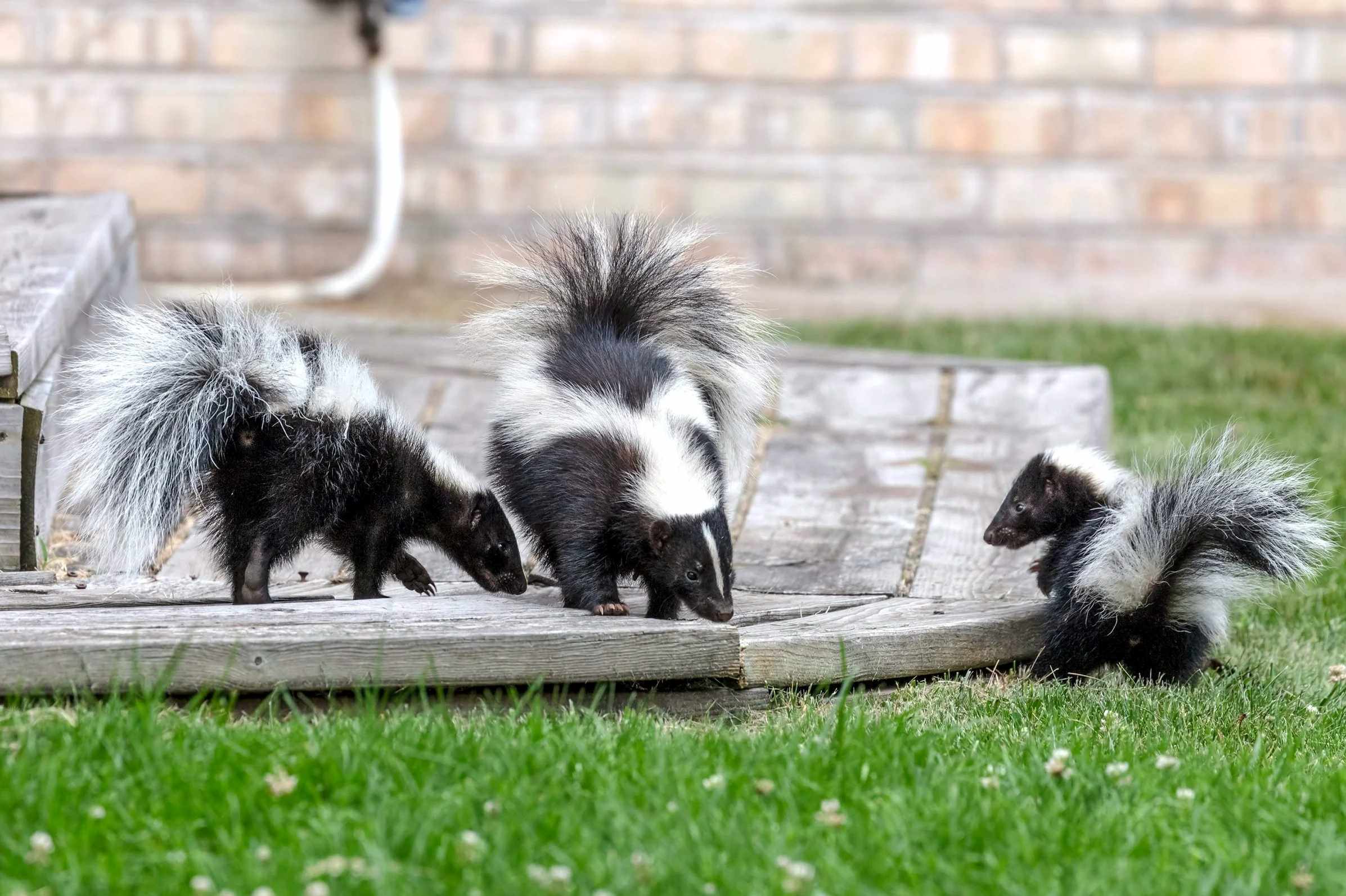

Gardening Tips and Tricks
How To Get Rid Of A Skunk In Your Backyard
Modified: January 22, 2024
Learn effective problem-solving strategies to safely remove skunks from your backyard. Discover expert tips and techniques to get rid of skunks without causing harm or damage.
(Many of the links in this article redirect to a specific reviewed product. Your purchase of these products through affiliate links helps to generate commission for Chicagolandgardening.com, at no extra cost. Learn more)
Table of Contents
- Introduction
- Understanding Skunks
- Identifying Skunk Activity in Your Backyard
- Assessing the Risk and Potential Damage
- Natural Methods to Repel Skunks
- Removing Skunk Food Sources
- Securing Your Garbage and Compost Bins
- Sealing Off Potential Sheltering Spots
- Using Deterrents and Repellents
- Trapping and Removing Skunks
- Seeking Professional Help
- Conclusion
Introduction
Having a skunk take up residence in your backyard can be a smelly and frustrating problem. Skunks, known for their distinctive black and white fur and potent defensive spray, can cause damage to your property and create an unpleasant living environment. Whether you’ve caught sight of a skunk or noticed signs of their activity, it’s crucial to take action promptly to prevent further issues.
Understanding skunks and their behavior is the first step toward solving the problem. Skunks are nocturnal creatures that are attracted to areas with readily available food sources and shelter. They are omnivorous scavengers and can feed on anything from insects and rodents to fruits and vegetables. Skunks are known to dig holes in lawns, damage plants, and even nest under decks or sheds.
If you suspect the presence of skunks in your backyard, it’s important to identify the signs of their activity. Look for burrow holes in the ground, damaged plants or turf, and a strong, lingering odor. Skunk droppings, which resemble small, cylindrical shapes, can also indicate their presence.
In this article, we will guide you through the process of dealing with skunks in your backyard. We will explore natural methods to repel skunks, tips on removing their food sources, securing your garbage and compost bins, and how to seal off potential sheltering spots. We will also discuss using deterrents and repellents to keep skunks away. If necessary, we will cover trapping and removing skunks and when it may be best to seek professional help.
Dealing with a skunk invasion may seem daunting, but with the right knowledge and action plan, you can effectively solve the problem and reclaim your backyard. Let’s dive into the details and get rid of those skunks once and for all!
Understanding Skunks
Skunks are small mammals known for their distinctive black and white fur pattern. They belong to the family Mephitidae and are native to North and South America. The most common species of skunk found in North America is the striped skunk. Skunks have a reputation for their pungent spray, which they release when threatened or alarmed.
Skunks are typically nocturnal creatures, meaning they are most active during the night. They have excellent hearing and sense of smell, which helps them locate food sources and detect potential dangers. Skunks are opportunistic omnivores, feeding on a wide range of plant and animal materials. Their diet consists of insects, small mammals, birds, eggs, fruits, nuts, and vegetation.
One of the most well-known features of skunks is their defensive mechanism – spraying a foul-smelling liquid from their anal glands. This spray is a strong deterrent for predators and can cause temporary blindness and irritation if it comes into contact with the eyes or skin. Skunks can accurately spray their defensive odor up to 15 feet away, which is why it’s important to keep a safe distance when encountering them.
Skunks are adaptable animals that can thrive in a variety of habitats, including forests, grasslands, and suburban areas. They are excellent diggers and can create burrows or seek shelter in existing burrows to escape extreme weather conditions or predators. Skunks are known to den under decks, sheds, and other structures where they can find a safe and secure shelter.
Skunks typically have a lifespan of about 2-3 years in the wild, although some individuals have been known to live longer. They reproduce in early spring, with females giving birth to a litter of up to 10 kits after a gestation period of around 60 days. The kits are born blind and rely on their mother for nourishment and protection until they are old enough to venture out on their own.
Understanding the behavior and habits of skunks is crucial when it comes to dealing with them in your backyard. By knowing their preferences for food, shelter, and patterns of activity, you can effectively implement strategies to deter them and prevent them from causing damage to your property. Let’s explore how to identify skunk activity and assess the risk they might pose in your backyard.
Identifying Skunk Activity in Your Backyard
Skunks are generally nocturnal animals, which means they are most active during the night. However, it’s not uncommon to spot them during dawn or dusk. If you suspect skunk activity in your backyard, it’s important to be able to identify the signs to confirm their presence.
One of the most obvious signs of skunks in your backyard is the strong, lingering odor. Skunks spray a musky and pungent liquid from their anal glands as a defense mechanism. If you detect a distinct smell that resembles the scent of skunk spray, it’s a clear indication that skunks have been around.
Another sign of skunk activity is visible damage to your lawn and garden. Skunks are known to dig shallow holes in search of insects and grubs, which can leave your yard looking like it’s been riddled with small craters. Additionally, they may uproot plants or damage vegetation while foraging for food.
Keep an eye out for skunk droppings as well. Skunks leave cylindrical-shaped droppings that are usually around 1-2 inches in length. These droppings may contain bits of undigested food, such as insects or seeds, which can help confirm skunk activity.
If you have pets, particularly cats or dogs, they may exhibit unusual behavior if there are skunks present in your backyard. Pets may become overly curious, agitated, or even get sprayed if they encounter a skunk. Pay attention to any unusual behavior of your pets that could indicate the presence of skunks.
Lastly, you may observe tracks left behind by skunks. Skunks have five toes on their front feet and four toes on their hind feet, with curved claws. Their tracks often appear in a line, with slight drag marks from their long nails. Identifying skunk tracks can provide further evidence of their activity in your backyard.
Remember, skunks are generally non-confrontational and will try to avoid human contact if possible. However, if you encounter a skunk, it’s important to give them space and not attempt to handle or corner them. Skunks typically only spray as a last resort if they feel threatened.
By being able to identify skunk activity in your backyard, you can take appropriate measures to address the issue effectively. In the next sections, we will explore various methods to deter skunks and minimize their presence in your outdoor space.
Assessing the Risk and Potential Damage
When it comes to dealing with skunks in your backyard, it’s important to assess the risk they pose and the potential damage they can cause. By understanding the extent of the problem, you can take appropriate action to mitigate the impact.
Skunks can cause various types of damage, both to your property and potentially to your health. One of the primary concerns is the damage they can inflict on your lawn and garden. Skunks are known to dig holes in search of insects and grubs, which can leave your lawn looking unsightly and uneven. They can also uproot plants, causing damage to your landscaped areas.
Additionally, skunks may raid your garbage cans and compost bins in search of food. They have a keen sense of smell and can easily detect food remnants, attracting them to these areas. This can result in a mess and potential damage to your bin lids.
The strong odor of skunk spray can also be a nuisance. If a skunk feels threatened or alarmed, it can release its defensive spray, which has a lingering and unpleasant smell. This can impact the enjoyment of your backyard and make it unpleasant for you, your family, and your pets.
While skunks generally prefer to avoid humans, they can carry diseases such as rabies and can transmit fleas and ticks. If you or your pets come into close contact with a skunk, there is a risk of contracting these diseases or dealing with infestations of parasites.
Assessing the risks and potential damage allows you to prioritize your efforts in addressing the skunk problem. If the damage is minimal and the risks are low, you may opt for less invasive methods of deterrents. However, if the damage is significant or you have concerns about the health risks, more proactive measures, such as trapping and removal, may be necessary.
By understanding the potential risks and damages associated with skunks in your backyard, you can better plan your approach to resolving the issue. In the following sections, we will explore natural methods to repel skunks, remove their food sources, secure your garbage and compost bins, and seal off potential sheltering spots to minimize the risk they pose.
Natural Methods to Repel Skunks
If you’re looking for a safe and environmentally-friendly approach to dealing with skunks in your backyard, there are several natural methods you can employ to repel them and discourage their presence.
One effective natural repellent is the use of strong scents that skunks find unpleasant. Skunks have a sensitive sense of smell, so using strong-smelling substances can deter them from entering your yard. Some commonly used repellents include citrus peels, ammonia-soaked rags, or peppermint oil sprayed around the perimeter of your property.
Skunks are also known to dislike the smell of certain plants. Planting repellent plants such as marigolds, daffodils, or alliums around your yard can discourage skunks from venturing close to your home. These plants have strong odors that skunks find unpleasant, and their presence can act as a natural deterrent.
Another effective method is the use of motion-activated sprinklers or lights. Skunks are nocturnal animals and prefer dark areas. By installing motion-activated devices that spray water or turn on bright lights when they detect movement, you can startle skunks and make them feel unwelcome in your yard.
Skunks are sensitive to vibrations, so installing a vibrating fence or ultrasonic devices can also help in repelling them. These devices emit vibrations or high-frequency sounds that are irritating to skunks and can deter them from approaching your property.
Keeping your yard clean and free from potential food sources can also discourage skunks from sticking around. Skunks are attracted to areas where food is readily available. Make sure to remove fallen fruits, secure bird feeders, and clean up any pet food that may attract skunks.
Lastly, skunks prefer areas with adequate shelter and hiding spots. By removing piles of debris, lumber, or other materials that can provide shelter to skunks, you can make your yard less attractive to them.
It’s essential to note that natural methods may take time and consistency to be effective. Skunks can be persistent, and it may require a combination of these natural deterrents to successfully repel them from your backyard.
By utilizing natural methods to repel skunks, you can create an environment that is less appealing to them. However, if these methods are not yielding the desired results or if you’re dealing with a severe skunk problem, it may be necessary to consider more aggressive approaches such as trapping and removal, which we will discuss in the following section.
Removing Skunk Food Sources
One of the most effective ways to discourage skunks from your backyard is to remove their access to food sources. Skunks are opportunistic omnivores and are attracted to areas where they can easily find food. By eliminating or securing potential food sources, you can greatly reduce their presence.
Start by addressing any issues related to the availability of insects and grubs in your yard. Skunks are excellent diggers and will often dig up lawns to feed on these small creatures. Consider treating your yard with organic insecticides or using natural methods such as nematodes to control the population of grubs and insects.
Another common food source for skunks is fallen fruits and vegetables. If you have fruit trees or a garden in your backyard, regularly pick up any fallen or overripe fruits and vegetables. These can act as a significant attractant for skunks, so keeping the area clean and free from produce can help deter them.
If you have a bird feeder, ensure that it is not easily accessible to skunks. Skunks are skilled climbers and can easily access birdseed left out in open feeders. Consider using squirrel-proof feeders or elevating your feeders on poles that are difficult for skunks to climb.
Pet food left outdoors can also attract skunks. If you have pets that eat outdoors, be sure to remove any leftover food as soon as your pet has finished eating. Leaving pet food out overnight can be especially inviting to skunks.
In addition to removing food sources, it’s important to address any potential water sources as well. Skunks need water to survive, so eliminating standing water in your yard can help discourage them. Fix any leaky outdoor faucets, empty water containers, and ensure that your yard has proper drainage to prevent standing water.
By removing or securing potential food and water sources, you make your backyard less attractive to skunks. This, in turn, reduces their incentive to visit and potentially take up residence in your yard.
Next, we will discuss how to secure your garbage and compost bins to prevent skunks from rummaging through them.
Securing Your Garbage and Compost Bins
Garbage and compost bins can be a prime attraction for skunks, as they provide an easy and accessible food source. To prevent skunks from rummaging through your bins and creating a mess, it’s important to secure them properly.
Start by using bins with tight-fitting lids. Skunks are adept at lifting lids, so make sure your garbage and compost bins have lids that securely close and cannot be easily opened. Consider using bins with locking mechanisms or adding bungee cords or straps to keep the lids tightly sealed.
If you have a compost bin, avoid adding any food scraps that can attract skunks. This includes meat, dairy products, and oily residues. Stick to adding yard waste, leaves, and other organic materials that do not have a strong odor and are less likely to attract skunks.
Position your bins in an area that is well-lit and easily visible. Skunks prefer dark and secluded areas, so by placing your bins in a well-lit spot, you make it less inviting for them to approach. Installing motion-activated lights near your bins can also startle skunks and deter them from attempting to access your garbage or compost.
Consider using scent deterrents to keep skunks away from your bins. Spraying a mixture of vinegar and water around the bin area or sprinkling cayenne pepper can discourage skunks from getting too close. These strong smells can help create a barrier that skunks find unpleasant.
Regularly clean your bins to minimize odors. Skunks have an acute sense of smell, so keeping your garbage and compost bins clean and free from lingering odors can help reduce their attractiveness.
Remember to put out your garbage and compost bins on the morning of pickup rather than the night before. This reduces the amount of time the bins are accessible to skunks and decreases the chances of them being attracted to your property.
By taking these measures to secure your garbage and compost bins, you minimize the likelihood of skunks finding a food source in your yard. However, it’s important to do more than just secure your bins. In the next section, we will explore sealing off potential sheltering spots to further discourage skunks from taking up residence in your backyard.
Sealing Off Potential Sheltering Spots
Skunks are opportunistic animals that seek out areas with suitable shelter for nesting and resting. By identifying and sealing off potential sheltering spots in your backyard, you can make your property less inviting to skunks.
Start by inspecting your property for any openings or gaps that skunks can use to access crawl spaces, decks, sheds, or other structures. Skunks can fit through small openings, so it’s important to seal off any holes or gaps with sturdy materials such as wire mesh or caulk.
Check for gaps under decks, porches, and raised foundations. Skunks are known to den under these structures as they provide protection from predators and the elements. Install barriers such as lattice or metal flashing to deter skunks from nesting in these areas.
Ensure that your doors and windows have proper seals. Skunks can squeeze through small openings, so make sure there are no gaps around the frames. Installing door sweeps and weatherstripping can help prevent skunks from entering your home or other buildings on your property.
Secure vents and openings in chimneys. Skunks can climb and may seek shelter in chimney stacks or vents. Cover these openings with fine wire mesh or special chimney caps to keep skunks out while still allowing proper ventilation.
Regularly trim bushes and shrubs near your home. Overgrown vegetation can provide hiding spots for skunks. By keeping the area around your property well-maintained and clear of dense shrubbery, you reduce the potential sheltering areas for skunks.
Consider installing motion-activated lights or sprinklers near potential sheltering spots. These devices can startle skunks and deter them from nesting or resting in those areas. Skunks are creatures of habit, so disrupting their preferred hiding spots can encourage them to move on.
By sealing off potential sheltering spots, you make your backyard less appealing to skunks. However, it’s essential to remember that skunks are resourceful and persistent creatures. If your efforts are not yielding the desired results, or if you’re dealing with a severe skunk problem, it may be necessary to explore the use of deterrents or trapping methods, which we will discuss in the following sections.
Using Deterrents and Repellents
If you have tried natural methods and discovered that skunks continue to be a problem in your backyard, it may be necessary to use additional deterrents and repellents to discourage their presence. There are various options available that can help deter skunks from your property.
One commonly used deterrent is the use of bright lights. Skunks are nocturnal creatures and prefer dark areas. By installing bright lights around your yard, particularly near areas where skunks are active, you can make them feel uncomfortable and less likely to linger. Motion-activated lights are especially effective as they startle skunks when they detect movement.
Another option to deter skunks is the use of loud noises. Skunks have sensitive hearing, so playing a radio or using noise-making devices near skunk-prone areas can make your yard less appealing to them. Be mindful of your neighbors and the noise regulations in your area when using this method.
Physical barriers can also be effective deterrents. Installing fences around your property can prevent skunks from easily accessing your yard. Ensure that the fence is buried deep enough to prevent skunks from digging underneath, as they are skilled diggers. The fence should also be tall enough to discourage them from climbing over.
Repellents can also help discourage skunks from entering your yard. There are commercially available skunk repellents that contain ingredients such as predator urine or other strong-smelling substances that skunks find unpleasant. Follow the instructions on the repellent package for proper application.
Ammonia-soaked rags or cotton balls placed near skunk-prone areas can also deter skunks. Skunks dislike the smell of ammonia and may avoid areas with a strong ammonia scent. Be cautious when handling ammonia, as it is a strong chemical and should be used in well-ventilated areas.
Ultrasonic devices can be effective in repelling skunks. These devices emit high-frequency sounds that are irritating to skunks but inaudible to humans. Simply place the device near skunk activity areas and let the ultrasonic waves do their work.
It’s important to remember that individual skunks may have different sensitivities and reactions to deterrents. What works for one skunk may not work for another. It may be necessary to try a combination of different deterrents and repellents to find what is most effective for your situation.
If your attempts to deter skunks using these methods are unsuccessful or if the skunk problem persists, it may be time to consider more direct intervention methods, such as trapping and removal, which we will discuss in the next section.
Trapping and Removing Skunks
If you’ve exhausted other methods and find that skunks are still causing issues in your backyard, trapping and removing them may be necessary. However, it’s important to approach this method with caution and be aware of local regulations and restrictions regarding wildlife trapping.
Before setting traps, identify the main skunk entry and exit points in your yard. Look for tracks, droppings, or signs of digging to determine their common travel routes. Place the traps along these paths, making sure they are secure and stable.
Choose a live trap that is specifically designed for skunks. These traps have a one-way door that allows the skunk to enter but prevents it from escaping. Bait the trap with something highly appealing to skunks, such as cat food, canned fish, or peanut butter. Place the bait at the back of the trap, away from the entrance, to ensure the skunk fully enters the trap.
Regularly check the traps to avoid causing unnecessary stress to the skunks. If you successfully trap a skunk, it’s crucial to handle it with care. Skunks can carry diseases, including rabies, so it’s best to contact your local animal control or wildlife removal professionals to safely remove and relocate the trapped skunk.
Never attempt to handle a trapped skunk yourself, as they can easily spray when frightened or feel threatened. Skunks have a range of up to 15 feet with their spray, and the odor is notoriously difficult to remove.
Once the skunk is successfully removed from your property, you will need to address any factors that attracted it in the first place. Secure any potential food or water sources, seal off potential sheltering spots, and implement strategies to deter future skunk activity.
It’s important to note that trapping and removing skunks should be considered a last resort. Skunks play a role in the ecosystem by controlling insect populations, and they generally prefer to avoid human interactions. If possible, explore other methods of deterrents and repellents before resorting to trapping and removal.
If you are unsure about trapping regulations or if you encounter challenges in trapping skunks, it’s best to consult with wildlife professionals who have experience in skunk removal. They can provide guidance, ensure compliance with local regulations, and safely handle the situation to minimize any harm to skunks or yourself.
Now that you’ve learned about trapping and removing skunks, let’s consider when it may be appropriate to seek professional help in dealing with a skunk problem in the next section.
Seeking Professional Help
Dealing with a skunk problem in your backyard can be challenging, especially if your efforts to deter or remove them have been unsuccessful. In such cases, it may be necessary to seek professional help to effectively address the issue.
Professional wildlife removal services have the expertise and experience to handle skunk problems safely and effectively. They are trained in proper trapping techniques, removal procedures, and the relocation of skunks to appropriate areas.
When choosing a professional wildlife removal service, consider their reputation and qualifications. Look for companies or individuals who are licensed, insured, and adhere to local regulations and ethical practices. They should have experience in dealing with skunks specifically and be knowledgeable about the best methods to resolve the problem.
Professional skunk removal services can assess the situation in your backyard and develop a customized plan to address the skunk issue. They can determine the best trapping and removal methods, as well as provide recommendations on preventing future skunk infestations.
Additionally, wildlife professionals can assist in identifying and sealing off potential entry points or areas of concern. They can provide guidance on making your yard less attractive to skunks by eliminating food and water sources, removing sheltering spots, and implementing effective deterrents.
It’s important to note that seeking professional help does come with a cost. The fees for wildlife removal services can vary depending on the extent of the skunk problem and the services provided. Consider obtaining multiple quotes and comparing services before making a decision.
If you’re uncertain about how to approach the skunk problem or if you’re concerned about potential risks or legalities, consulting with a professional can provide peace of mind and ensure the situation is handled properly.
Remember, skunks are wild animals and can pose risks, including the transmission of diseases such as rabies. It is crucial to prioritize your safety and the well-being of the skunks when dealing with a skunk problem.
In the end, seeking professional help can be a wise choice when it comes to resolving persistent or complex skunk problems in your backyard. Their expertise and resources can help alleviate the issue and provide you with a skunk-free environment.
Conclusion
Dealing with skunks in your backyard can be a nuisance, but with the right approach, you can successfully mitigate the problem. Understanding skunk behavior, identifying signs of skunk activity, and assessing the potential risks and damages are key steps in addressing the issue.
Natural methods such as repelling skunks with strong scents, removing food sources, securing garbage and compost bins, and sealing off potential sheltering spots can help discourage skunks from your property. Additionally, using deterrents and repellents, along with seeking professional help when necessary, can provide effective solutions.
It’s important to remember that skunks play a role in the ecosystem and prefer to avoid human interaction. Whenever possible, try to resolve the issue using humane and environmentally-friendly methods before resorting to trapping and removal.
If you choose to trap skunks, handle the process with care and consult local regulations to ensure compliance. Professional wildlife removal services can provide expert assistance in handling skunk problems, as they have the knowledge and experience to safely and effectively address the issue.
By implementing the strategies and methods discussed in this article, you can take control of the skunk problem in your backyard. Remember to prioritize your safety and the well-being of both yourself and the skunks throughout the process.
With persistence, patience, and a proactive approach, you can create a skunk-free environment and once again enjoy your backyard without the annoyance and potential damages caused by these furry intruders.

